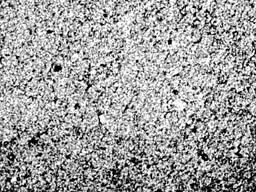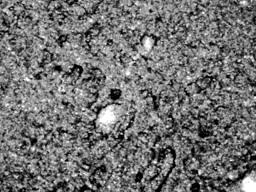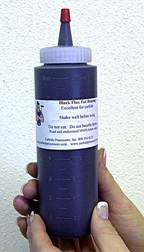 Loading... Please wait...
Loading... Please wait...(800) 346-8274
Free Ground Shipping on Orders over $150!
Over 23,000 Items Discounts up to 40% off Retail
Brazing Flux
Our Newsletter
- Home
- Technical Info
- Brazing Carbide
- Brazing Flux
Brazing Flux
|
Brazing Flux covers the area being brazed and keeps oxygen away from the materials. A good braze joint is both physically and chemically bound. If oxygen gets in then the steel or carbide will oxidize instead of bonding to the brazing alloy. Brazing flux has mild cleaning properties but the parts must be clean before starting. Brazing flux is not designed to clean off oil, greases, dirts or anything else. It may clean off some existing oxides but it mostly prevents the formation of new oxides. You can view more article about How to Braze in our Brazing Index. There are two primary objectives that ALL brazing fluxes must meet. They are:
A common saying is that brazing alloy follows the brazing flux. The alloy tends to flow where the brazing flux has cleaned and prepared the joint. The alloy can also flow beyond that if the surface is clean enough and does not oxidize too badly during heating. Using Flux has a great impact on the brazing process. View our article on How Fluxing Affects Brazing. Many metals and alloys have oxygen on the surface, primarily as metal oxides - CuO, FeO, etc. These metal oxides must be reduced (oxygen pulled away from the metal) before the braze alloy can make a metallurgical bond. Once the oxygen atom is removed from the metal surface, it must be contained within the brazing flux. The containment is performed by the boron atom in the formation of borate compounds. Brazing flux is a protective sponge for the brazing joint. As with a sponge, brazing flux will only hold so much oxygen. How long brazing flux will absorb oxygen depends both on the length of the heating cycle and temperatures used. A long, low-temperature cycle can be equivalent to a short, high-temperature cycle. The brazing flux will quit working at somewhere around 1600-1800 F depending on the length of the cycle and the amount of oxygen available. In tool brazing with the more common silver alloys the flow point is somewhere below 1400 F depending on the alloy. There are many types of brazing fluxes. We will discuss two types; White Brazing Flux and Black Brazing Flux. These are the most commonly used brazing fluxes for tungsten carbide. White Brazing Flux- Standard high temperature brazing flux Preferred by many because you can see the work through the brazing flux while heating. White Brazing Flux is a combination of Potassium salts of Boron and Fluorine. It consists of Potassium Tetraborate, Boric Acid, Potassium Pentaborate, Potassium Bifluoride, Sodium Dodecyl sulfate, Boron and water. Black Brazing Flux - Black Brazing Flux is white Brazing Flux with extra boron Black Brazing Flux gives maybe 50 to 100% more protection and stays good for about 400 degrees F higher than white brazing flux. Since brazing flux prevents oxidation by absorbing the oxygen this means that black brazing flux provides greater protection. Black brazing flux also works up to 2200 F while white Brazing Flux is rated up to 1600 F and my source gave the figure of 1300 F as a recommended figure for maximum temperature. Purified Black Brazing Flux – Typically gives 30% To 100% Better Braze Joints The critical part of saw and tool brazing is what goes on inside the braze joint. Ordinary brazing flux is inexpensively made and has up to 10% odd size particles and non-active minerals in it. These odd size particles and non-active minerals get lodged in the brazing area and greatly weaken the joint. This is Black Brazing Flux with several extra steps to give a creamier, more consistent product. The extra steps remove impurities that can get trapped in closed joints. This is an especially good product for use in close brazing joints subjected to high stresses such as carbide tipped saws. You can Buy Brazing Flux in a small and convenient squeeze bottles to try it out, or buy our Brazing flux by the jar and get a great deal. Purified Brazing Flux
You can see and feel the difference immediately. Purified Brazing Flux is black Brazing Flux that has had extra processing steps. These processing steps take the inert particles out and leave the brazing flux a rich, creamy brown color. If you take a little of each brazing flux and rub it between your fingers you can feel that purified brazing flux is not only smoother but the particles are smaller and there are no extra large particles. White and Black Brazing Fluxes In our experience we have seen saw brazing problems with White Brazing Flux that were eliminated by switching to Black Brazing Flux. This is what we saw and this is what has been reported to us from other sources. This is a disputed opinion. Scientifically, there should not be that much difference between the two Brazing Flux formulations. There are many people who are brazing successfully with white Brazing Flux. Both are excellent products and both have unique qualities. If you are having brazing problems and using white Brazing Flux then switching to Black Brazing Flux is something worth trying. Both Brazing Fluxes perform as follows.
The main difference: At 850 / 900 F when both brazing fluxes turn liquid, the white brazing flux is more transparent, making it easier to see the assembly. With time (oxidation), the black brazing flux also becomes transparent. Brazing Flux is made to prevent oxygen from getting to the parts as they are heated. Steel and especially tungsten carbide oxidize at room temperature. The hotter they get the more they oxidize. Above 1,000 F tungsten carbide oxidizes extremely rapidly and forms an unbrazeable surface. Purified Brazing Flux is good for more time at higher temperatures, up to 1,700 F. Use lots of Brazing Flux Many people make the mistake of thinking of brazing flux as expensive so they don’t use enough. Use lots of brazing flux. Metals will not flow if there is not enough brazing flux used. As a general rule coat both sides of the plate and the notch with a thick enough layer of brazing flux so that you cannot see through it. Brazing Flux application Different brazing fluxes can be applied many ways such as dipping, spraying, brushing and automatic paste dispensers. Brushing may be the best way since the brushing action helps clean the surface physically. For all practical purposes the various ways of applying brazing flux can be considered roughly equivalent if they deposit the same amount of Brazing Flux in the proper locations. Brazing flux can be thinned with water for application. Tap water can work but distilled or deionized water is probably better. Once brazing flux has dried to a solid it is very difficult to add liquid and turn it back into a successful paste. Brazing flux is pretty inexpensive and there is very little need to use brazing flux that has dried. Brazing Flux life The life of both the white and black brazing flux is related to the oxidizing environment to which they are exposed. The oxidizing environment (or source of oxygen) normally is the metal surface, oxygen in the air, and oxygen in the flame. A change of oxygen from any of these sources affects the life of the brazing flux. The life of both the white and black brazing flux is directly related to the amount of boron atoms left in the brazing flux. When all of the boron atoms are tied to oxygen atoms, the brazing flux becomes “spent” or “expended”. An example of the oxidizing environment would be two customers working out of the same brazing flux container. One customer cleans his parts immediately before brazing and uses a neutral flame. The other customer has a “rusty” surface and turns up the oxygen to where it approaches a cutting torch. These are two obvious differences in oxidizing environment. There is also a problem with brazing with a torch in that white brazing flux and black brazing flux react differently and a brazer who is used to dealing with one will have to relearn his techniques somewhat when using the other. It is obviously possible to get excellent results by using either brazing flux for brazing since a lot of people are doing it. The problem is that the two brazing fluxes seem to be sold as being replacements one for the other without sufficient explanation or training on the differences between the two. |
|







